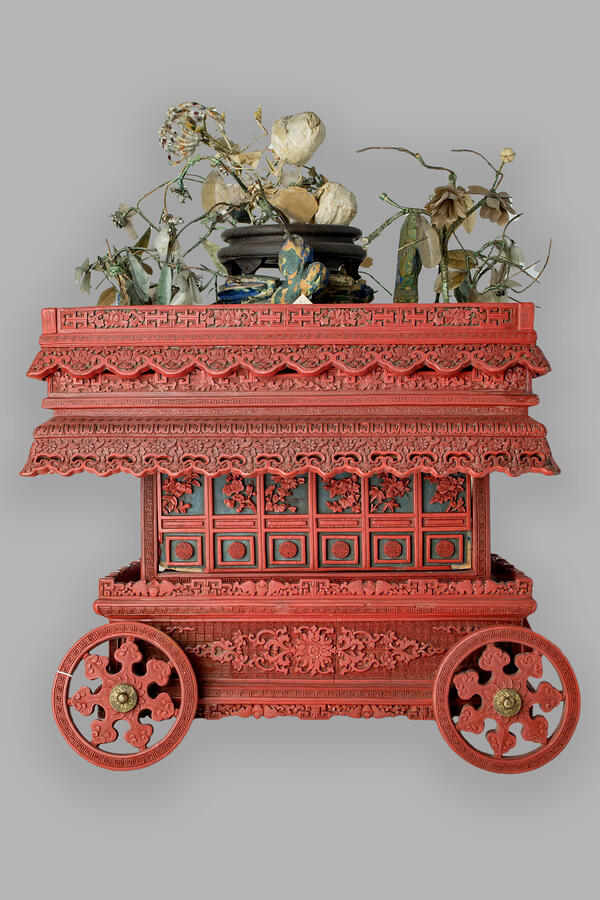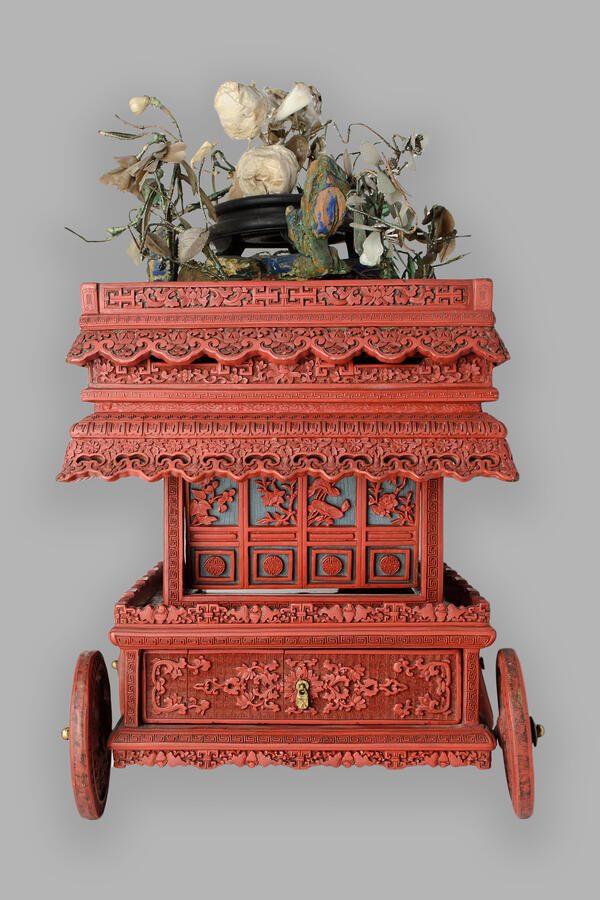Chinese decorative art is distinguished by the love of color and the beautiful choice of material. Products of Chinese applied art were imported via Kyakhta. It was a trading settlement until being united with Troitskosavsk in 1734 and was populated by millionaires who were engaged in trade with China. In spite of this, not many of these items have ended up in the Kyakhta Museum.
Still, the collection does feature a unique exhibit that not only dates back to the time of the Qing dynasty but is also characterized by exquisite craftsmanship. It is a four-wheeled carriage made of carved wood and coated with red lacquer. It is crowned with a vase holding a bouquet made of various materials.
The carriage was made of several removable parts. It served as a pot-pourri vase and could be used both in churches (at the altar) and elsewhere on special occasions, such as weddings. The carving was performed in the traditional bas-relief style, depicting various flowers on the small sliding doors, with background motifs and patterns filling the product’s entire outer surface.
While creating the pattern, the craftsman first scratched it into the lacquered surface and then carved it. Red lacquer was softer, more porous, and more colorful than many other materials, and its surface was more suitable for deep carving.
The technique of carving into red lacquer has a long history. Lacquerware is resistant to rapid temperature changes and humidity. Lacquer is a natural material sapped from the lacquer tree which grows mainly in southern China. It is used only after being mixed with mineral colorings.
In ancient China, lacquer was used mainly to prolong the life of items. While creating a product, up to one hundred layers of black or red lacquer were successively applied to the processed surface. The combination of such different materials (lacquer, metal, stone, fabric, and even cotton wool) in one product, as well as its technical features and decorative patterns indicate that it was manufactured at the turn of the 19th century.
The curly waves and
clouds and the use of flattened forms contributed to the unique nature of the
so-called Chinese style. The exhibit was donated to the museum in 1894 by
Matryona Dmitriyevna, the wife of Mikhail Nemchinov, a famous Kyakhta merchant
of the first guild.





